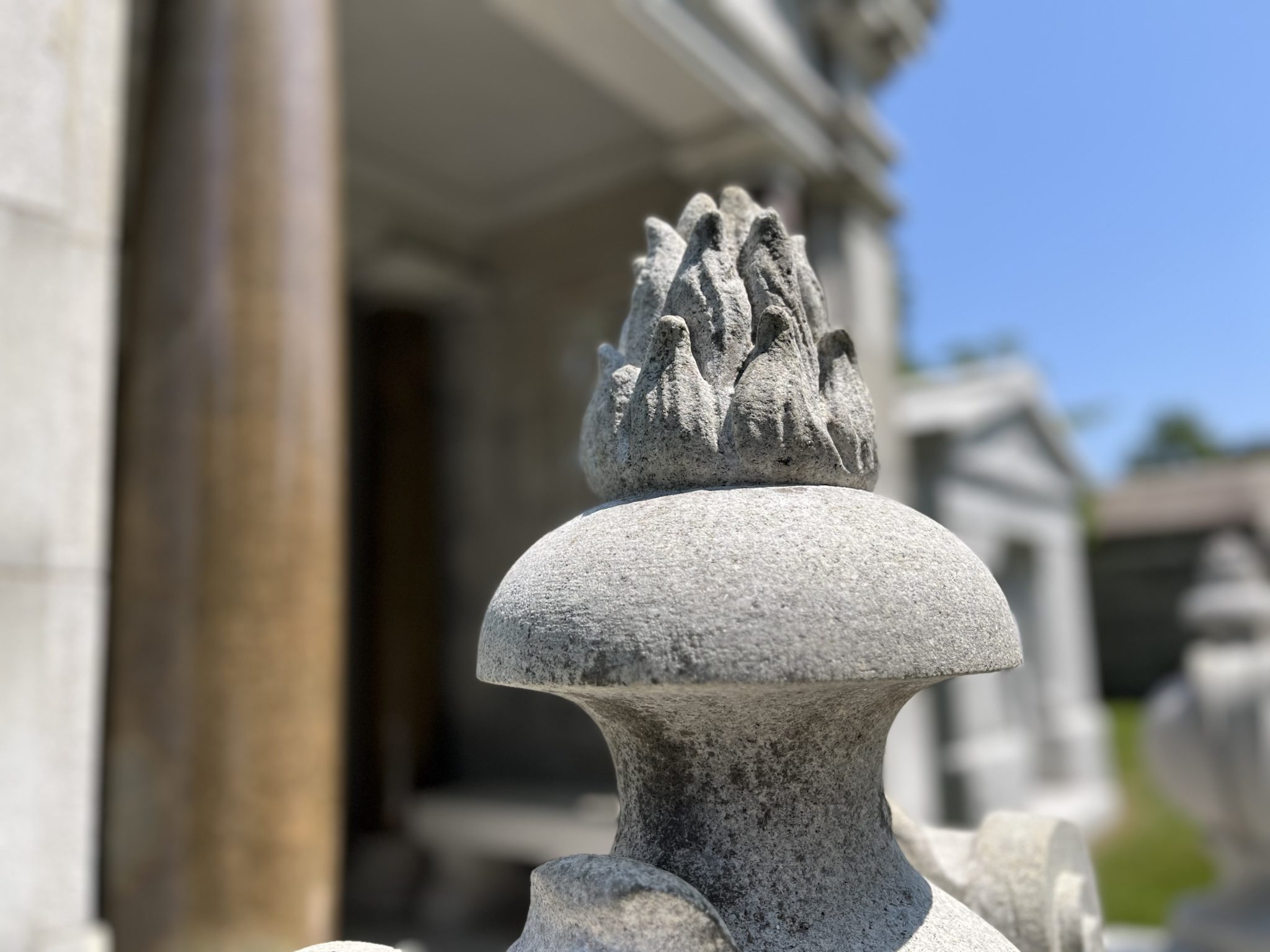
The term “funeral” comes from the Latin word “funeralis,” which means a “torch-lit procession.” As a matter of custom, Romans almost always buried their dead at night with a torch light leading the way. Roman funerals were held at night to forestall large public gatherings, and discourage crowds and excessive mourning which, especially in the case of major political figures, could lead to serious unrest.
As time went on, Christians made use of numerous symbols borrowed from the Romans, including the lit torch. To Christians, the lit torch signifies an eternal flame that cannot be extinguished—living on even when confronted by a force as great as death. In other words, a lit torch communicates a person is deceased, but the everlasting flame of their soul burns on in the afterlife.
The lit torch is a true grave motif. When seen on a gravestone, the lit torch represents the death of the flesh, but the eternal life of the soul. Liked with the regenerative properties of fire, the lit torch is everlasting life. An old symbol of hope, the torch, when depicted as lit, is a symbol of life in the next realm as the soul passes from the material world. Lit torches on a gravestone can also symbolize enlightenment and the light of knowledge of the departed.
Woodlawn is an open-air art gallery and living history museum that attracts 100,000 visitors annually. Our memorials represent the largest and finest collection of funerary art in the country. Visit our cemetery and explore 400 acres of art, architecture, and history.
Woodlawn continues to be a non-sectarian cemetery without a specific religious affiliation.
